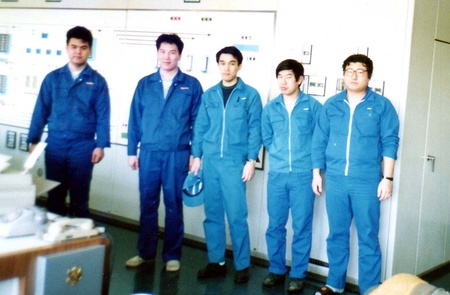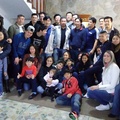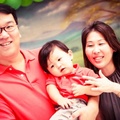108 years after the Kasato Maru ship officially brought the first immigrants from Japan, Brazil is proud to be the country with the largest number of Nikkei in the world. With this information alone, perhaps an uninformed person might believe that due to the large number of Nikkei , Brazil is accustomed to the Japanese language, just as it is currently accustomed to eating sushi and watching anime . I'm mistaken...
Even in São Paulo, where the majority of Nikkei are concentrated, people do not have an affinity with the Japanese language. There is no word like the Italian ciao , which became “tchau” in Portuguese, which all Brazilians understand and use. Even Japanese words incorporated into Portuguese language dictionaries are not common and are mispronounced in the mainstream media. Tsunami is pronounced “tissunami” and dekasegi became “decasségui”, for example. Some Nikkei also pronounce these words incorrectly. After all, we already have descendants in the fifth generation and, if they haven't studied the language, they should know at most a few words from Nikkei-go . In addition to the lack of knowledge, there is the connivance of some influential experts in the Japanese language: leave it like that – it's easier for “them”.
My mother says that until I started preschool, I spoke more Japanese than Portuguese. She also says that I first learned to write in Japanese, since at the age of 5 I started attending the nihongo-gakko in São Bernardo do Campo. But it was with my obaachan , who like all good Nikkei or immigrants mixed Portuguese with the Japanese language, that I learned “my Japanese”. I laugh when I remember our phrases (mine and my sisters) when we were little talking to our obaachan . She made us pray at the hotokesan (Buddhist altar) every morning and asked: “ mou ogamimashitaka ?” (have you prayed?) – and we answered: “já ogandei ”, conjugating the Japanese verb as in Portuguese grammar.

And this Japanese mixed with Portuguese is what I used until I went to Japan as a scholarship holder in 1994. After a year there everything changed. I can no longer mix Japanese and Portuguese. My father, for example, continues to mix a lot! In his conversation with our Japanese relatives he mixes Portuguese words naturally, as if they were understanding on the other side of the phone. And this is the “Japanese” that predominates among the descendants, the Nikkei-go , also nicknamed “batianese”: that Japanese mixed with Portuguese and with old words, even with some hogen (dialects) of Obaachan , or “batiam” , as many write and pronounce.
In Brazilian Portuguese, it is also common for words ending in “O” and “U” to be confused phonetically, which means that Japanese words are also spelled and pronounced incorrectly, such as “shoyo” instead of shoyu or “misoshiro”. instead of miso soup . Another influence of the Portuguese language on pronunciation was its 1943 reform, which eliminated the letters K, Y and W from the alphabet (they returned in the 1990 reform) and then Tokyo became Tokyo and Kyoto became Kyoto, citing some examples. The worst was for Osaka , which became Osaka and was pronounced “ozaka”, Nagasaki , which became Nagasaki and was pronounced “nagazaki” and Hiroshima , which became Hiroshima and was pronounced “iroshima”. Also before 1943, words that did not have writing in our alphabet used the “Y” a lot, such as indigenous and Arabic words. But someone must have believed that this also served Japanese and spelled Nikkei with “Y” (it became “nikkey”) and many Nikkei still believe to this day that this is the correct way. Nikkei with “Y” for me is the typical representation of the influence of Brazilian Portuguese on the romanized writing of Japanese.
If we depended solely on the Nikkei community for the survival of the Japanese language in Brazil, probably in a few more years we would no longer have anyone who speaks the language. My 7-year-old son, for example, only knows a few very basic words. However, in this current globalized and connected world, we know that we will always have the Japanese language present in Brazil. But probably not Nikkei-go anymore.
© 2016 Claudio Sampei






